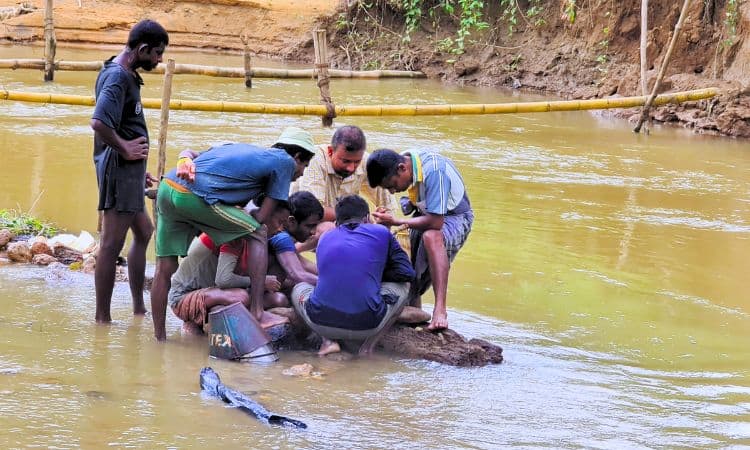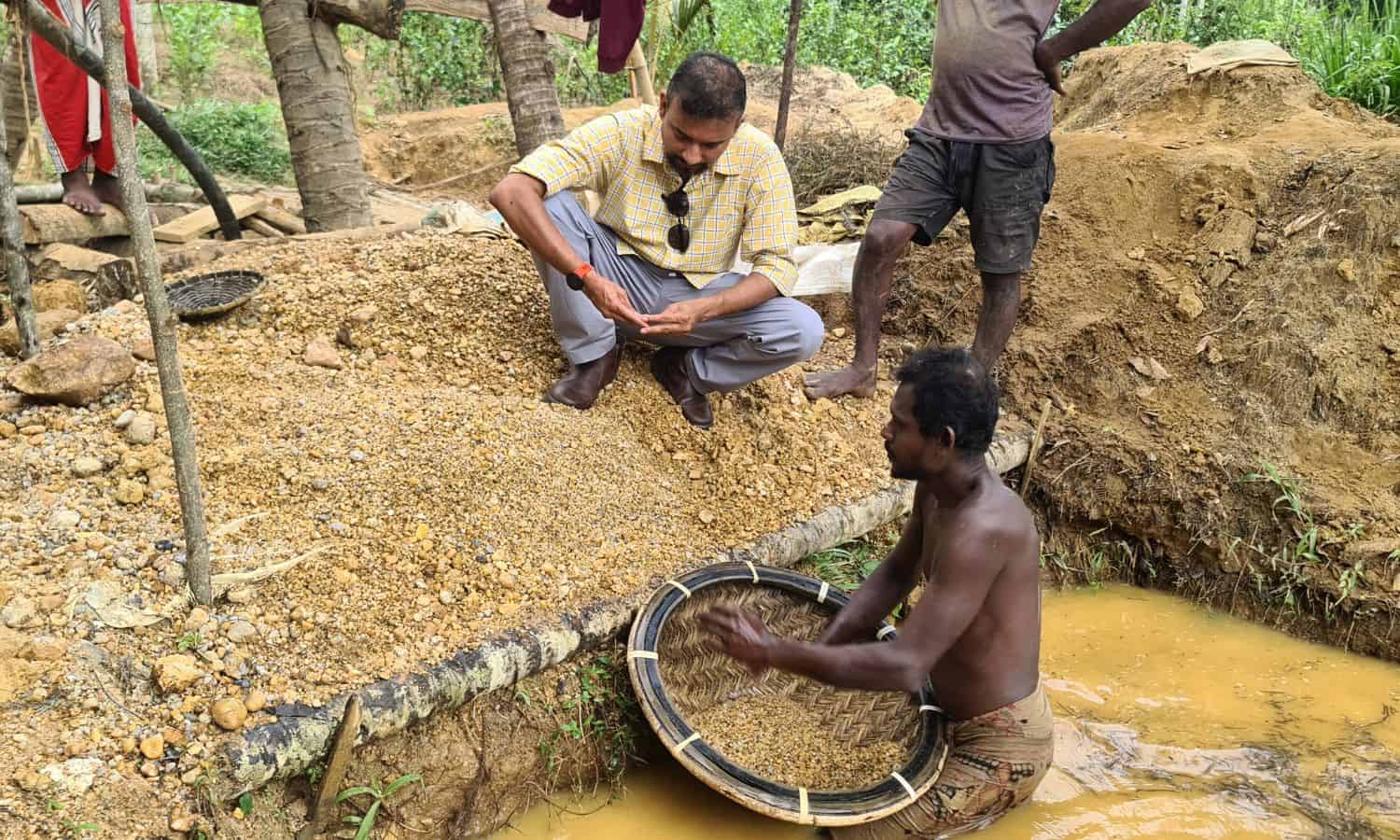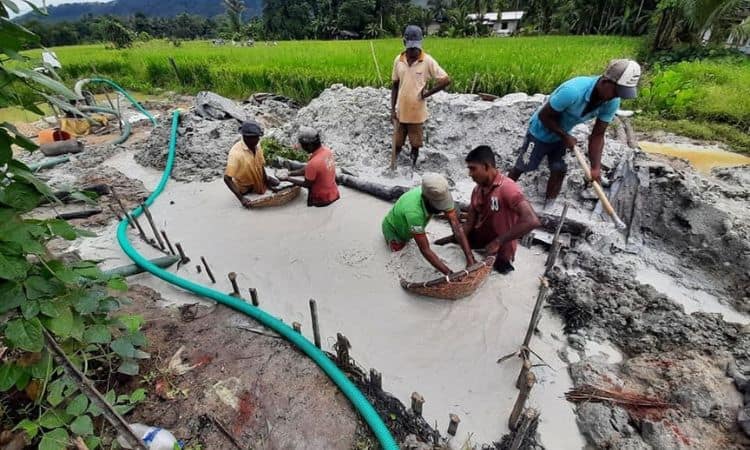Gem Mining in Sri Lanka & Thailand: History, Regions & Techniques
Gem Mining in Sri Lanka & Thailand: The World’s Gemstone Capitals
For centuries, Sri Lanka and Thailand have sparkled at the heart of the global gemstone trade. Both countries are celebrated for their exquisite sapphires and rubies, with unique histories, mining methods, and local traditions that shape the journey of these precious stones from earth to jewelry. In this comprehensive guide, explore the gem mining heritage, key regions, mining techniques, and the impact these industries have had on local communities and the world’s jewelry business.
The Rich Legacy of Gem Mining
Sri Lanka, often called the "Island of Gems," boasts an unbroken tradition of gemstone mining for over 2,000 years. Its sapphires, rubies, and other gemstones have adorned royalty and dazzled collectors worldwide, renowned for their brilliance and vibrant color. Thailand, meanwhile, is celebrated for its deep blue sapphires and a thriving gem-cutting industry that has helped shape the global jewelry market.
Sri Lanka: A Gemstone Paradise
Historical Significance
Sri Lanka has supplied some of the world’s finest sapphires and rubies for millennia. Ancient texts, colonial records, and archaeological finds all point to a vibrant gem trade stretching back to the time of Roman and Chinese empires. The allure of Sri Lankan sapphires—especially the famous blue and padparadscha varieties—remains undiminished today.
Key Gem Mining Regions
- Ratnapura: Known as the “City of Gems,” Ratnapura is Sri Lanka’s most prolific and famous gem-mining area. It is the epicenter for blue and pink sapphires, rubies, and a variety of other precious stones.
- Elahera District: Renowned for its sapphires and various colored stones, Elahera's mines often yield high-quality gems, including the rare cat’s eye chrysoberyl.
- Nuwara Eliya: Set in the cool, misty hills, this region is notable for its unique gem gravel and the occasional find of distinctive colored sapphires and garnets.
Types of Gemstones Found
While Sri Lanka is best known for its sapphires (blue, pink, yellow, and padparadscha), the island’s gem gravel also yields rubies, alexandrite, cat’s eye chrysoberyl, spinel, tourmaline, zircon, and garnet. Notably, diamonds and emeralds are not found in Sri Lankan deposits.
Mining Techniques: Tradition Meets Opportunity
Sri Lankan gem mining remains largely alluvial, focusing on gem-rich riverbeds and ancient alluvial deposits. The process is labor-intensive and steeped in tradition:
- Manual Labor: Most mining is done by hand, using shovels, baskets, and simple tools to excavate gravel from riverbeds and small pits.
- Profit Sharing: Teams of workers typically operate on a predetermined agreement, sharing profits from any valuable stones found.
- Washing: The gravel is washed in large shallow baskets, a technique similar to gold panning. The heavier gemstones settle at the bottom, allowing lighter material to be swept away.
- Small Pits: Thousands of small pits dot the landscape in key regions. These shallow excavations target ancient riverbeds where gem-bearing gravels accumulate.
These sustainable, low-impact methods have been practiced for centuries, preserving the environment while supporting local communities.

sapphire mining in sri lanka in a river
Seasonal Challenges: The Role of Climate
The tropical monsoon season greatly influences mining operations. Heavy rains can flood pits and make access difficult, often halting mining for weeks at a time. This natural cycle shapes the rhythm of the gem mining year, dictating when and where miners can safely work.
Gem Markets and Trade
Sri Lanka’s gem markets are famous worldwide, with the Ratnapura Gem Market being the most prominent. Here, miners, traders, and buyers from across the globe come together to buy, sell, and admire the latest finds. Other key markets include Beruwala, Elahera, and Nuwara Eliya.
Thailand: The Blue Sapphire Hub
Historical and Economic Importance
Thailand’s gem industry rose to prominence in the 20th century, especially as a source for deep blue sapphires. Its reputation has been built not only on mining but also on world-class gem cutting and trading expertise.
Major Gem Mining Areas
- Bo Ploi: Located in Kanchanaburi Province, Bo Ploi is Thailand’s major source of blue sapphires. The region’s stones are highly valued for their deep, saturated colors.
- Chanthaburi: While not a major mining region today, Chanthaburi is the heart of Thailand’s gem-cutting and trading industry, with a long tradition of processing rough gems from both local and international sources.
Mining Methods: From Primitive to Mechanized
- Pit Mining: Simple pits dug into alluvial deposits are still used, especially by small-scale miners. This method is labor-intensive and relies on local knowledge of gem-rich gravel layers.
- Mechanized Mining: In some areas, machinery is used to excavate deeper deposits, enabling access to gems that would otherwise be unreachable due to the challenging terrain.
- Terrain and Access: The landscape can be rugged, and access to some mining sites is limited, requiring creativity and adaptation from mining teams.
Cutting, Polishing, and Trade
Thailand’s true specialty lies in its gem-cutting industry. In cities like Chanthaburi, household workshops employ both hand tools and power-driven machines to cut, facet, and polish rough stones to perfection. This expertise has made Thailand a global center for gemstone processing and export.

sapphire mining in sri lanka
Comparing Sri Lanka and Thailand: Key Differences & Similarities
| Aspect | Sri Lanka | Thailand |
|---|---|---|
| Primary Gems | Sapphires (multiple colors), Rubies, Alexandrite, Cat’s Eye | Blue Sapphires, Rubies |
| Mining Method | Alluvial, manual, small pits | Pit mining (manual & mechanized) |
| Main Regions | Ratnapura, Elahera, Nuwara Eliya | Bo Ploi, Chanthaburi |
| Cutting & Polishing | Local markets, some cutting locally | Major cutting/polishing center (Chanthaburi) |
| Climate Impact | Monsoon restricts mining | Monsoon restricts mining |
The Impact of Gem Mining on Local Communities
Both Sri Lanka and Thailand’s gem industries provide vital livelihoods for thousands of families. Mining, trading, and processing gems create jobs, support small businesses, and sustain local economies. Traditional profit-sharing systems in Sri Lanka foster community bonds, while Thailand’s household workshops pass down skills through generations.
Responsible Mining & the Way Forward
As global demand for ethically sourced gemstones rises, both countries are adapting:
- Sustainable Practices: Traditional, small-scale mining in Sri Lanka is inherently low-impact. Increasing awareness of environmental protection helps preserve river systems and landscapes.
- Certification: Both countries are enhancing traceability and certification, assuring buyers of the authenticity and ethical origins of their gemstones.
- Community Initiatives: Programs focused on miner safety, education, and fair trade are increasingly common.
Visiting the Gem Regions: A Traveler’s Guide
Gem tourism is a growing trend, offering visitors the chance to witness traditional mining, visit bustling gem markets, and even try their hand at washing gem gravel. Key experiences include:
- Exploring the Ratnapura Gem Market or Chanthaburi’s gem streets
- Taking guided tours of mines and workshops
- Learning about the history and science of gemstones at local museums
Conclusion: The Enduring Allure of Asian Gemstones
Sri Lanka and Thailand’s gem mining traditions continue to fascinate, producing some of the world’s most coveted stones through a blend of ancient wisdom and modern expertise. Whether you’re a jeweler, collector, or curious traveler, understanding the journey of a sapphire or ruby—from riverbed to ring—adds a new dimension of appreciation to these timeless treasures.
Key Takeaways
- Sri Lanka and Thailand are historic and current leaders in the gemstone industry.
- Ratnapura and Bo Ploi are the primary mining regions for sapphires and rubies.
- Traditional, sustainable methods remain central, especially in Sri Lanka.
- Gem cutting and trading are crucial to Thailand’s global influence.
- Ethical and sustainable mining practices are increasingly important for the future.
For those seeking the finest sapphires, rubies, and colored gemstones, a journey into the mines and markets of Sri Lanka and Thailand reveals not just the origins of beauty—but the heart of a global tradition.



Comments (0)
Write your review